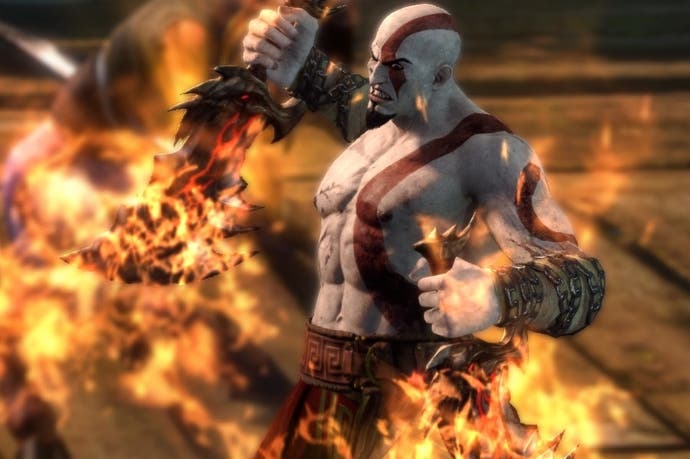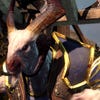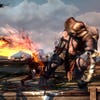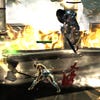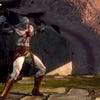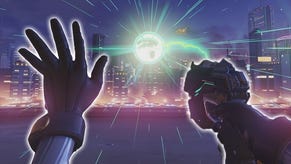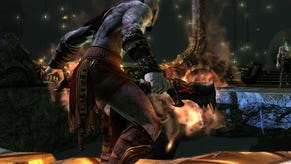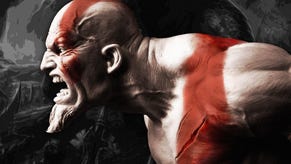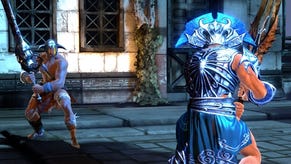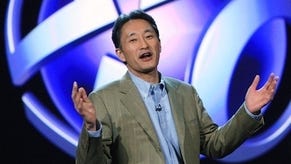Tech Analysis: God of War: Ascension demo
Digital Foundry cuts into what may be the best looking PS3 game to date.
March is the month for platform exclusive prequels it seems, and from Sony's Santa Monica studios comes a real belter of a slash-em-up. As the developer's second major foray on PlayStation 3, God of War: Ascension renders out the early days of perpetual angry-man, Kratos, and gives us a chance to see where the team's penchant for striking, mythic backdrops has taken it this time. It may be back to square one for the leading demi-god, but a calm before the storm this most certainly is not.
Though perhaps less muscular in his younger years, the lengthy demo shown during Sony's E3 2012 conference revealed just how early on our Spartan hero started up with the whole limb-lopping act. Now that we've had some time with the 715MB demo ourselves, we're more clued in on how the game's tech has been tweaked from its use in God of War 3 too - itself a strong indicator of where things may stand for the final release.
Onto the basic setup then: rather than overhaul the engine built for the last game - costing circa $44m for Sony to produce in the first place - subtler tweaks are in order for Ascension. Clearly an ongoing evolution of ideas, series director Stig Asmussen seemed convinced towards the end of the last game's production that "there's a lot more we can do with it" [Updated: typo corrected!]. He highlighted improved animation blending systems in particular as one of the big steps forward for any future release that may come to be, declaring "we just didn't implement it in God of War 3 because it came in real late."
Fast forward two years, and what have we got? The fundamentals of resolution and anti-aliasing appear to be as we'd left them, with a 1280x720 framebuffer married with an effective post processing pass to clear artifacting on edges. A subtle sub-pixel shimmering is present across stretches of high density texture-work, such as the craggy skin of the demo's elephantine Juggernaut boss. This is telling for its association with morphological anti-aliasing (MLAA), but besides that, Ascension is an impeccable game to watch in motion, and as before, harsh edges very rarely escape the watchful AA censor.
The biggest break from series tradition would be the lowered frequency of quick time events, in favour of interactive mini-games to land the finishing blow on a boss. Plus, we see a wholesale revision of the real-time combat. There are pilfer-able weapons to wield this time, for example, such as javelins, clubs and swords, whose swipes and jabs link smoothly with Kratos' usual fire-lashing chain attacks. The flow of battle feels unmistakeably more fluid than God of War 3's too, and we now have the ability to tether a chain-hook to enemies from across the screen, without the demand to follow-up with an attack immediately after.
"Building on the stunning God of War 3, Sony Santa Monica's new prequel looks set to extract even more performance from the PS3 hardware."
The taster may be several months old by this point, but true to the original promise, it's clear that animation tweaks have made a big difference for translating button presses into more fluid on-screen actions. The decorative layer, above the character motion, has been ramped up considerably too. Every whip of Kratos' chain now causes a giant, arcing flame effect to trail behind, with an absolute wild-fire erupting on-screen once the combo metre builds above six hits. The abundance of alpha buffers on display is especially impressive, considering how previous God of War titles used a clearer shader trail behind weapons, with fire effects reserved for punctuating the end to a combo.
It's been ramped up, but that's not necessarily ideal. With particle effects sparking on collision, object-based motion blur, and the lighting implications of the vast volumes of fire, the game's explosive visual design can be tough to interpret at its peak. It looks sensational, but Kratos often gets lost in the blaze once it reaches a certain point in a combo string, making it trickier than before to see which moves he's pulling off. The code is dated, of course, and we may see differences in the final release - Sony Santa Monica has form for pushing optimisation and new effects work right up to the wire.
The other big feature of Ascension is the Lifecycle ability, letting Kratos not only climb moving terrain, but also influence the landscape based on a time-reversal mechanic. In the case of one dock-side structure ruined early on by a sea creature, depending on how far you heal it, you can climb up different routes to access new heights. The ability to shift terrain like so puts an extra emphasis on exploring these beautiful, large environments for hidden bonuses, though seeing buildings smash apart in slow motion does makes for great eye candy too.
"In terms of frame-rates, we see the same unlocked, v-synced set-up we saw in God of War 3, with highly accomplished motion blur smoothing over any judder."
Onto frame-rate matters, and we immediately see much of the game operating at a ballpark 30FPS, with only a brief dip to 26FPS flaring up during the first battle on the pier. Alas, it follows series form by not locking directly to this usual value, meaning fluctuations up to 50FPS are also possible. Tearing is avoided through use of triple-buffering, but a slight judder effect can be felt while panning at these higher frame rates. This is made less bothersome by the fact that full-screen and per-object motion blur tends to smooth over sweeping movements, and the quality of the effects work in both cases is quite phenomenal.
While our experience with God of War: Ascension's multiplayer beta has been limited, early samples of the Colosseum tutorial section show that the engine is running at the same clip as the solo adventure, at a fluctuating 30-40FPS. Rewired to include network play, customised characters are primarily based on the same "rig" as Kratos when it comes to handling attacking animations. There's a similarity in the systems used here, which, as revealed by creative director Todd Papy, is why a set of female characters proved to be an awkward fit for online play in the final call.
Once in the thick of it, the customisable characters don't quite carry the same detail levels as Kratos, nor do the elemental effects compare to his bullish on-screen presence. Of course, this is fully accepted when throwing a character into an arena with seven other players, and making sure a firm competitive balance is struck. Fortunately, the dynamic AI-controlled camera and motion blur of single-player have made the jump here, helping to uphold at least two cinematic hallmarks of the series.
So is this what we can expect from God of War: Ascension's full release? After all, we saw radical changes to the lighting, the addition of motion blur, MLAA, plus improved textures between the demo and full builds of God of War 3 in 2010. It was a night and day switch, but Ascension's demo appears to have many of these design choices already factored in from the get-go. Only time will tell if more changes are in the pipeline, and so we'll be back with a full report closer to the big moment on March 13. In the meantime, an entirely new demo appears set to hit the PSN store before the full release, which may prove even more revealing of the game's progress.
